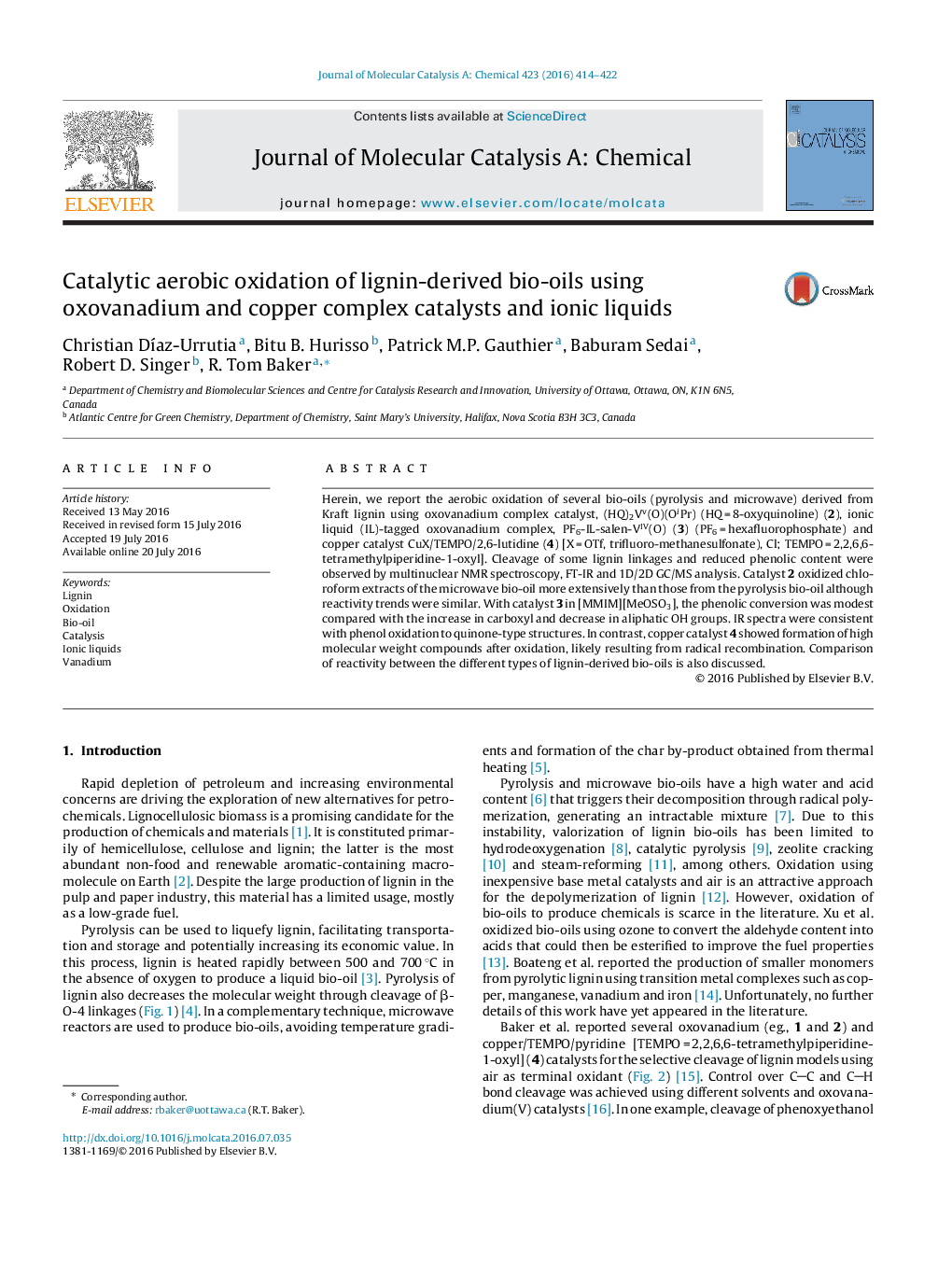| کد مقاله | کد نشریه | سال انتشار | مقاله انگلیسی | نسخه تمام متن |
|---|---|---|---|---|
| 64566 | 48361 | 2016 | 9 صفحه PDF | دانلود رایگان |
• Aerobic oxidation of lignin-derived bio-oils (pyrolytic and microwave).
• Oxidation using oxovanadium and copper catalysts in organic solvents.
• Oxidation using ionic liquid-tagged salen-oxovanadium catalyst in ionic liquids.
• Significant oxidation of phenols was observed by GC/MS and multinuclear NMR.
• Selectivity differences were observed using the three different catalysts.
Herein, we report the aerobic oxidation of several bio-oils (pyrolysis and microwave) derived from Kraft lignin using oxovanadium complex catalyst, (HQ)2Vv(O)(OiPr) (HQ = 8-oxyquinoline) (2), ionic liquid (IL)-tagged oxovanadium complex, PF6-IL-salen-VIV(O) (3) (PF6 = hexafluorophosphate) and copper catalyst CuX/TEMPO/2,6-lutidine (4) [X = OTf, trifluoro-methanesulfonate), Cl; TEMPO = 2,2,6,6-tetramethylpiperidine-1-oxyl]. Cleavage of some lignin linkages and reduced phenolic content were observed by multinuclear NMR spectroscopy, FT-IR and 1D/2D GC/MS analysis. Catalyst 2 oxidized chloroform extracts of the microwave bio-oil more extensively than those from the pyrolysis bio-oil although reactivity trends were similar. With catalyst 3 in [MMIM][MeOSO3], the phenolic conversion was modest compared with the increase in carboxyl and decrease in aliphatic OH groups. IR spectra were consistent with phenol oxidation to quinone-type structures. In contrast, copper catalyst 4 showed formation of high molecular weight compounds after oxidation, likely resulting from radical recombination. Comparison of reactivity between the different types of lignin-derived bio-oils is also discussed.
Figure optionsDownload high-quality image (90 K)Download as PowerPoint slide
Journal: Journal of Molecular Catalysis A: Chemical - Volume 423, November 2016, Pages 414–422
